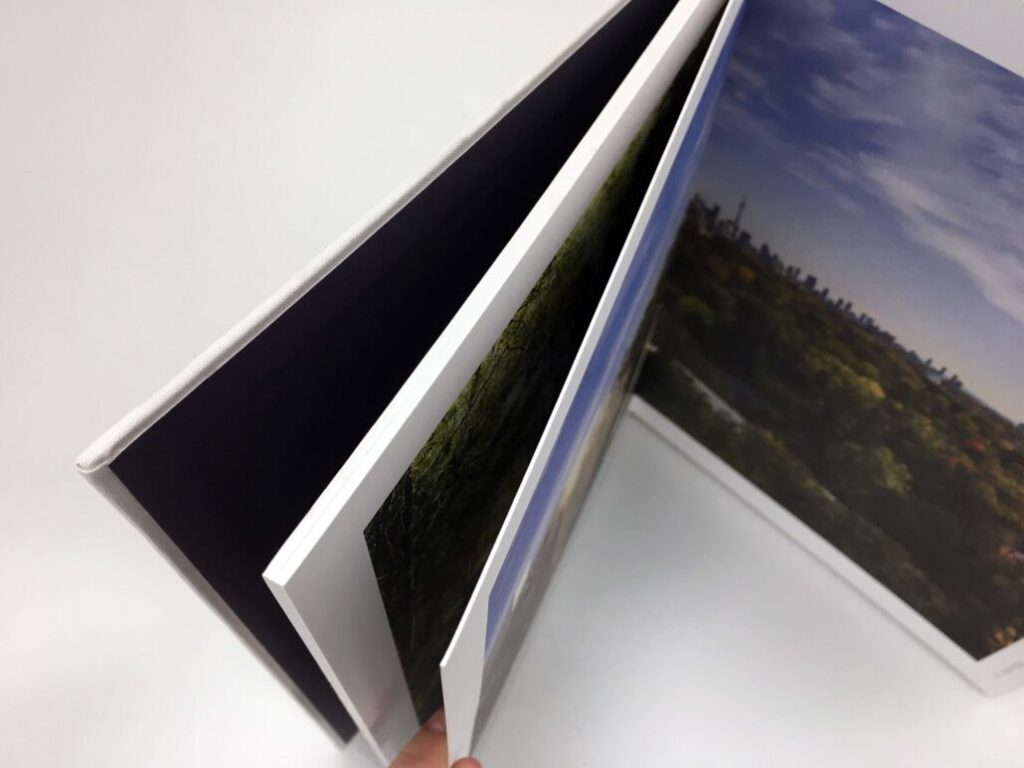
original script:
Board books are becoming increasingly popular. As a bindery we saw our first board book job only six years ago; a quantity of 10,000. Subsequently we’ve done a number of jobs ranging from a few hundred to a couple of thousand. What is unique, unusual, or distinctive about board books is that when you open the pages the paper flows unbroken from edge-to-edge, side-by-side. To produce a board book, you the printer, prints paper only on one side. We cut the paper into 4-page sections and fold as 4 pagers. As the four pages are coming off the folding machine, they are all blank on the outside. We then collate the blank sections, feed them through one of our gluing machines and glue them together. Now if the paper is light stock it’s has very flexible page. Frequently when you walk into a bookstore, you’ll see dozens of children’s books that are made in China. The pages are really, really, really thick because between the sections are inserted a heavier board, 30pt, 40pt maybe 50pt thick are all glued together. But the focus of this particular picture is what a board book looks like when it’s glued into a wrapped, thicker cover as pictured on the page attached. We take the finished trimmed book and glue it into the wrapped cover, which overhangs like a normal casebound, cased-in book. If somebody were doing a board book with us and the price per unit was asked and then they asked us to add the case with a printed wrap the price would probably increase by 50%. Different than the normal hardback in style, there’s a wider range of sizes. It’s more common with board books that they have a wide range of sizes such as 4” x 4”, or 13” x 13.” So if you need a standard board book or a cased in board book, please give us a call. A normal board book that does not have an overhang, hardback case, are frequently PMC or high-die die-cut. They are shaped as a half circle or concave or wide rounded corners. This is quite frequent with a normal non cased in board book. Thank you for your interest. Please remember all American quotes include two-way shipping. All American agreed-upon delivery times, include shipping time 2 ways.
replacement text:
The Rising Popularity of Board Books: A Unique and Distinctive Book Format
In the ever-evolving world of publishing, it’s fascinating to witness how book formats continue to evolve and adapt to meet the preferences and needs of readers, both young and old. In recent years, one such format that has been gaining traction in the publishing world is the board book. As a bindery, we’ve witnessed this shift firsthand. In fact, it’s been just six years since we handled our first board book job, a modest quantity of 10,000 copies. Since then, we’ve produced numerous board books, with print runs ranging from a few hundred to a couple of thousand. What makes board books unique, unusual, and distinctive is the way they are constructed.
Seamless and Sturdy Pages
When you open the pages of a board book, you’ll notice something quite distinct from traditional paper books. The paper within board books flows unbroken from edge to edge, side by side. The process of creating a board book is different from that of regular books. Instead of printing on both sides of the paper, we print only on one side. This printed paper is then cut into 4-page sections and folded as 4-pagers. As these sections come off the folding machine, they are all blank on the outside. The magic happens when we collate these blank sections, feed them through one of our gluing machines, and bind them together. The result is a sturdy, page-turning experience that is perfect for young readers.
Thick Pages and Unique Manufacturing
Board books are quite distinct from your typical children’s books. If you’ve ever walked into a bookstore and perused the children’s section, you’ve likely come across books made in China. These books often have exceptionally thick pages. This thickness is achieved by inserting a heavier board, usually around 30pt, 40pt, or even 50pt thick, between the sections, which are then glued together.
But the real focus here is on what a board book looks like when it’s bound into a wrapped, thicker cover. We take the finished trimmed board book and attach it to the wrapped cover, similar to a traditional casebound book. This cover overhangs, just like you’d expect from a standard hardback book. If you were to request a board book with a printed wrap-around case from us, the price would likely increase by around 50% due to the added complexity of the binding process.
Variety in Size and Style
What’s interesting about board books is that they come in a wider range of sizes compared to regular hardbacks. You might find board books as small as 4″ x 4″ or as large as 13″ x 13.” This diverse sizing caters to the varying preferences and needs of young readers and their parents.
Normal board books that don’t have an overhanging hardback case are often PMC or high-die die-cut. They can feature unique shapes, such as half circles, concave forms, or wide rounded corners. These unconventional shapes add an extra layer of visual and tactile appeal, making board books a delightful choice for both children and collectors.
In Conclusion
In an ever-expanding landscape of publishing options, board books have carved out their own niche, offering a unique and distinctive reading experience for children and their families. Their seamless, sturdy pages, variety of sizes, and unique manufacturing processes make them a valuable addition to the world of literature. If you’re in need of a standard board book or a cased-in board book, don’t hesitate to give us a call. We’re here to make your board book vision a reality.
At our bindery, we’re committed to delivering quality products, and we want to remind you that all our quotes for American customers include two-way shipping. Additionally, any agreed-upon delivery times for our American clients incorporate the time it takes for shipping both ways. Thank you for your interest in board books, and we look forward to helping you bring your creative ideas to life.

The Rising Popularity of Board Books: A Unique and Distinctive Book Format
In the ever-evolving world of publishing, it’s fascinating to witness how book formats continue to evolve and adapt to meet the preferences and needs of readers, both young and old. In recent years, one such format that has been gaining traction in the publishing world is the board book. As a bindery, we’ve witnessed this shift firsthand. In fact, it’s been just six years since we handled our first board book job, a modest quantity of 10,000 copies. Since then, we’ve produced numerous board books, with print runs ranging from a few hundred to a couple of thousand. What makes board books unique, unusual, and distinctive is the way they are constructed.
Seamless and Sturdy Pages
When you open the pages of a board book, you’ll notice something quite distinct from traditional paper books. The paper within board books flows unbroken from edge to edge, side by side. The process of creating a board book is different from that of regular books. Instead of printing on both sides of the paper, we print only on one side. This printed paper is then cut into 4-page sections and folded as 4-pagers. As these sections come off the folding machine, they are all blank on the outside. The magic happens when we collate these blank sections, feed them through one of our gluing machines, and bind them together. The result is a sturdy, page-turning experience that is perfect for young readers.
Thick Pages and Unique Manufacturing
Board books are quite distinct from your typical children’s books. If you’ve ever walked into a bookstore and perused the children’s section, you’ve likely come across books made in China. These books often have exceptionally thick pages. This thickness is achieved by inserting a heavier board, usually around 30pt, 40pt, or even 50pt thick, between the sections, which are then glued together.
But the real focus here is on what a board book looks like when it’s bound into a wrapped, thicker cover. We take the finished trimmed board book and attach it to the wrapped cover, similar to a traditional casebound book. This cover overhangs, just like you’d expect from a standard hardback book. If you were to request a board book with a printed wrap-around case from us, the price would likely increase by around 50% due to the added complexity of the binding process.
Variety in Size and Style
What’s interesting about board books is that they come in a wider range of sizes compared to regular hardbacks. You might find board books as small as 4″ x 4″ or as large as 13″ x 13.” This diverse sizing caters to the varying preferences and needs of young readers and their parents.
Normal board books that don’t have an overhanging hardback case are often PMC or high-die die-cut. They can feature unique shapes, such as half circles, concave forms, or wide rounded corners. These unconventional shapes add an extra layer of visual and tactile appeal, making board books a delightful choice for both children and collectors.
In Conclusion
In an ever-expanding landscape of publishing options, board books have carved out their own niche, offering a unique and distinctive reading experience for children and their families. Their seamless, sturdy pages, variety of sizes, and unique manufacturing processes make them a valuable addition to the world of literature. If you’re in need of a standard board book or a cased-in board book, don’t hesitate to give us a call. We’re here to make your board book vision a reality.
At our bindery, we’re committed to delivering quality products, and we want to remind you that all our quotes for American customers include two-way shipping. Additionally, any agreed-upon delivery times for our American clients incorporate the time it takes for shipping both ways. Thank you for your interest in board books, and we look forward to helping you bring your creative ideas to life.
Hard Cover Books / Case Wrapped Books
We bind hard cover/ case wrapped books…the whole range; litho wrapped or cloth wrapped cases; square back or round-backed; super thin to four inches thick. We can smyth sew books up to 20” x 20”!!! Also, if your job is perfect bound and then cased in, we can perfect bind books up to again 20” x 20” on a Mueller perfect binder (we have 3). We can bind with leather, add metal corners, supply our printed ribbons, die-cut or deboss/emboss covers, individual personalize names in quantities from dozens to thousands, apply spine “hub”, foil stamp covers, foil/gild or stain the edges of the pages…whatever you want, we most likely can do.
Please remember our quotes includes two-way shipping. Production time includes two-way shipping. We handle all border paperwork. During the weeks ahead as I present different products, please feel free to ask for samples. There is an old adage that says, “a picture is worth a thousand words.” I add to that my thought that “a sample is better than a thousand pictures!”
We have done work for American printers for over 25 years…from 17 states…from as far west as Seattle…as far south as Dallas and Florida and east to Maine!
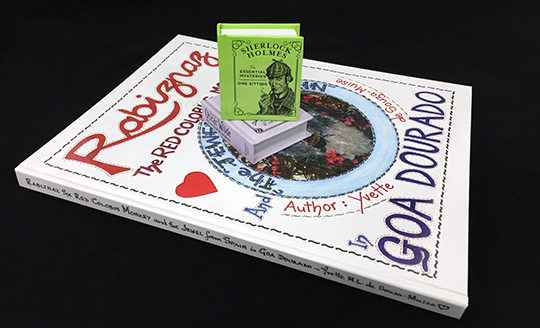
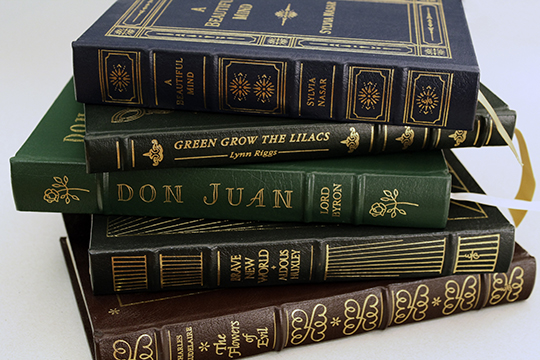
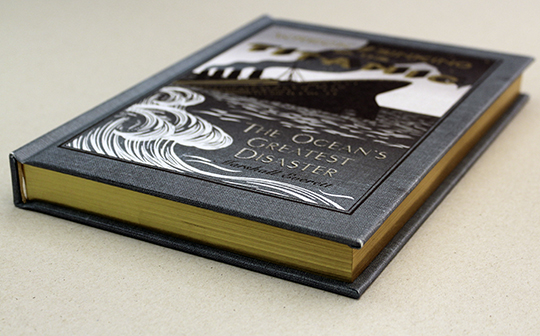
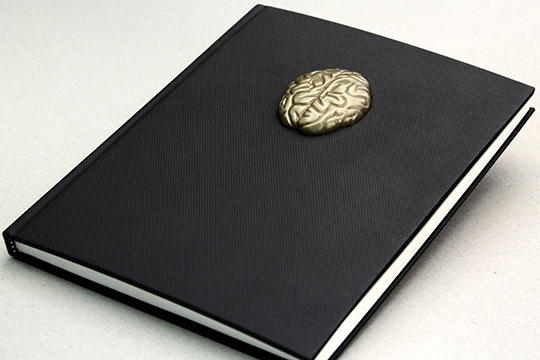

USA CUSTOMERS
When you receive an estimate from us, our price includes two-way shipping (dock-to-dock). Our shipping team handles all:
- Trucking & Expediting
- Carrier communication & Border paperwork
- Customs charges & Brokerage fees
For more information on Case Bound Books please click here.
Case binding is a traditional method of bookbinding. The covers of casebound or hard cover books are made by wrapping board with printed paper or other materials like book cloth, linen or leather. Our process includes making the cases, adding head & tail bands, Smyth sewing or perfect binding and then casing-in. We can also add features likes foil stamping on the cover and spine and bookmarks.
